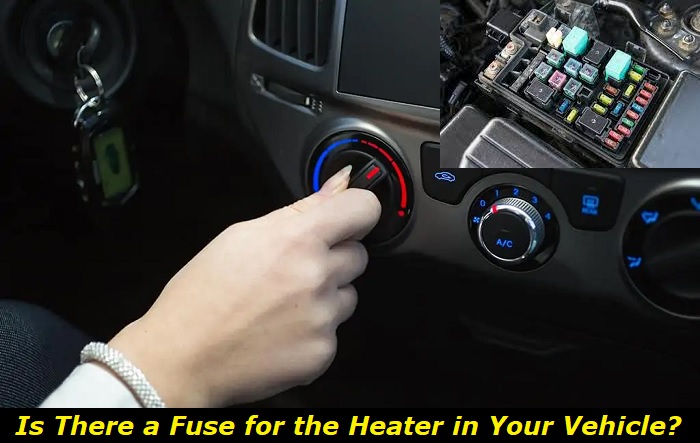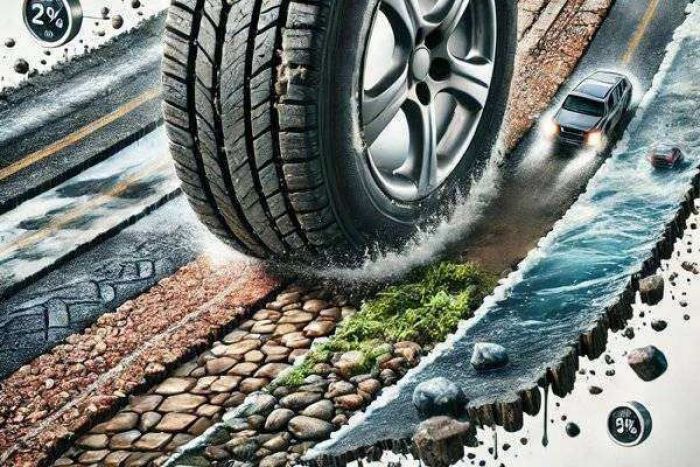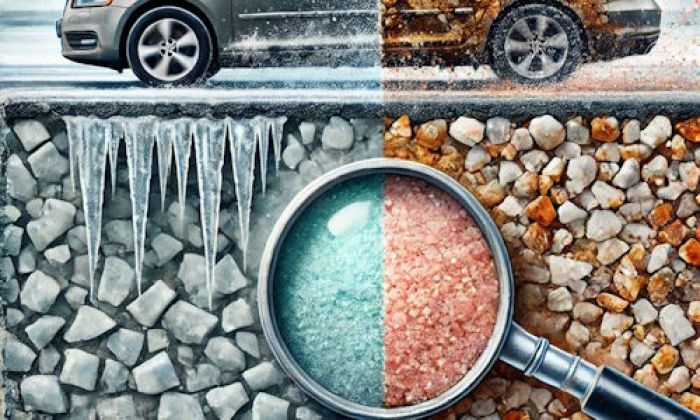Has your car heater failed, and are wondering what to check first? Do you want to check the fuse box but are unsure whether your car heater has a fuse? The heater in your car does indeed have a fuse. You can confirm if the heater fuse is the reason for the malfunction by checking the fuse box. Consult your vehicle owner's manual for the location of the heater fuse.
Fuse problems highlights
- Level of urgency:medium
- DIY inspection:possible
- DIY repairs:possible
- Can you drive?yes, if it starts
- Price of repairs:$0 - $50
- Ifignored:certainequipment will not be working at all
- Ways to fix:test the fuses, replace the blown fuse

How Does a Blown Fuse Affect the Heater in My Car?
First, if your vehicle's heating system fails because it blew a fuse, it is only a sign that you have an underlying problem. A blown fuse is not what should be worrying you, but the exact cause of the failure.
Fuses protect other components from damage when a circuit overloads. Think of them as expendable components; they die so other parts can live.
Therefore, if you check and confirm that the heater fuse blew, find out what caused it to blow before replacing it. You can use the same amp fuse as the original. You should inspect the heater circuit or the motor if the new fuse blows as soon as you turn on the blower. They may have a short.
If the fuse blows after some minutes, check the fan motor. It must be running hot because of worn brushes or bushings. Replacing either or both of these components could fix the heater problem.
How Does the Car Heater Work?
Your car heater has more than one purpose. Besides keeping you warm in your cabin, it also helps keep the engine cool. Some common terms you will come across when talking about your car heater include the heater core, blower motor, hoses, heater control valve, and HVAC control panel.
In addition, the heater also works with other components, such as your vehicle's cooling system water pump, engine coolant, thermostat, and radiator. When the heat from the engine leaves the radiator, it goes to the heater core. The heater core lets the coolant flow through with the help of the heater control valve controls. The heater core begins to heat up as the coolant flows through it.
Your car heating system has a blower motor that pushes cold air over the heater core and into your cabin. The air heats as it passes over the heater core, thus warming your car. You can use the HVAC control panel to regulate the speed at which the air from the heater core blows into your cabin.
Other Reasons Your Car Heater Stopped Working
Besides a faulty fuse, other reasons could cause the heater to malfunction. For example, a low coolant level could make the heater fail. Additionally, if the heater core clogs, cold air passing over it will not heat to the required temperature. If the heater works correctly, it should warm your car to about 75 to 100 degrees F. If it does not, the following factors may be the culprits.
1) Low Coolant Level
If the engine coolant drops below the required level, the hot fluid may not reach the heater core, thus causing the heating system to malfunction. The coolant could be low because you did not fill it correctly, or there is a leak in the radiator. A weak radiator cap could also allow the coolant to escape until you do not have enough. It could also be because the engine is straining and overheating.
2) Air Pockets in the Heater Core
If the heater core or the heater core hoses entrap air, it may interrupt the proper flow of coolant through the heater core.
You can check if there is proper coolant flow by feeling the heater core hoses. If there is a complete circulation of the coolant, the inlet and outlet return hoses will be hot when the engine is at its typical operating temperature and the car heater is on.
Getting rid of the air pockets can be tricky. On some models, manufacturers recommend lowering the front or lifting the back of your car when refilling your coolant to eliminate the air pockets.
You can also try venting the entrapped air. Some models have "bleeder" valves on the thermostat housing and the hose connections. You can open these valves for the trapped air to escape as you refill the coolant. Close the valves when you notice the coolant dripping from them. If your vehicle does not have one of these "bleeder" valves, you can loosen the outlet hose of the heater core to allow air to bleed out as you refill the coolant.
3) Blocked Heater Core
Although this is not a common occurrence, dirt and debris coming with the coolant could accumulate on the heater core and clog it up. The dirt and debris could also come from a rusting radiator. When the heater core clogs, it hinders the free flow of the coolant, affecting the heating effect of your car heating system.
There are two ways you can fix a clogged heater core, refurbishing or replacing it altogether. Many mechanics and auto experts recommend replacing the heater core with a brand-new one.
To protect your heater core from plugging, flush and refill your cooling system with a fresh mixture of antifreeze and water in a ratio of 1:1. Distilled water is perfect because it does not contain mineral components.
4) Thermostat Malfunction
Your thermostat may malfunction for several reasons. It could be broken or stuck open or closed. Whatever the reason, your car heater will not work if the thermostat malfunctions. The worst part of a malfunctioning thermostat is that it does not affect the car heater only. It also interferes with the cooling system of your engine.
A thermostat may also affect the vehicle heating system if it is too cold. Most vehicles today require a 190 to 195-degree F thermostat.
To check if your thermostat is stuck open, start a cold engine and feel the upper hose of your radiator. If the thermostat is working correctly, you will not feel any coolant moving inside the pipe until the motor begins to warm up. After a few minutes, the thermostat will open up, and a sudden surge in the flow of hot coolant will push through the hose.
5) Faulty Wiring/ Electrical Issues
Like any electrical system, your car heating system could have a loose wire connection or a short fuse. This could mean the system is not transmitting your command to turn on the heater.
If no air or sound comes from the heating system, the blower motor may be the cause. The heating system could suffer from electrical issues such as blown fuses, faulty power relays, bad heater switches, or broken wiring. You should check all these before settling for any replacement.
6) HVAC Control Problems
Your car heater works at the driver's command through the HVAC control panel. What nobody thinks about is that buttons, knobs, and touchscreen command keys could fail to transmit your commands. If this happens, the heater may not come on when you command it. Shorts, broken dials, and faulty touchscreens could all lead to this problem.
It could be better if you check the HVAC control panel before going deep into the car heating system. The problem could be right in front of you on the dashboard.
Is it Okay to Drive with a Malfunctioning Heater?
The heater in your car depends on the engine heat to warm your car. For this reason, it is not easy to tell what is causing the heating system to fail or what other problems the failing heating system could generate. Your engine's cooling system could suffer significantly if the heating system, especially the heater core, in your car fails.
The heater primarily clogs, and this is where the malfunction begins. You can drive in this condition, but not for long. If you continue driving before fixing this problem, you could cause more damage to the engine.
Since your car heater depends on the proper functioning of the engine, a malfunctioning heating system could also mean something is wrong with the engine. While everybody runs to the heater core, the problem could be a broken hose, leaking radiator, faulty head gasket, or a bad water pump. Failing to check the issue now could force you to repair components that were not bad when the symptoms first showed.
If your car's heating system is not working, you may have to check all these areas. If you lack confidence or expertise, always consult a professional mechanic.
To Conclude
We hope that we answered your question correctly. Your car heater could be failing because its fuse just blew. However, blowing a fuse is not the reason you should worry. You should be thinking about what caused the fuse to blow. Blowing a fuse is only a symptom of an underlying problem that you should check and fix.
Even a minor blockage on the heater core is enough to give you chills when the temperature drops. Always consult your vehicle owner's manual or a professional mechanic for assistance when you are stuck with a malfunctioning car heater.
About the authors
The CarAraC research team is composed of seasoned auto mechanics and automotive industry professionals, including individuals with advanced degrees and certifications in their field. Our team members boast prestigious credentials, reflecting their extensive knowledge and skills. These qualifications include: IMI: Institute of the Motor Industry, ASE-Certified Master Automobile Technicians; Coventry University, Graduate of MA in Automotive Journalism; Politecnico di Torino, Italy, MS Automotive Engineering; Ss. Cyril and Methodius University in Skopje, Mechanical University in Skopje; TOC Automotive College; DHA Suffa University, Department of Mechanical Engineering






Add comment